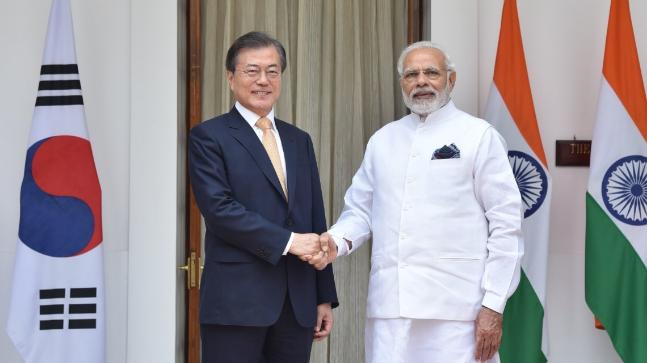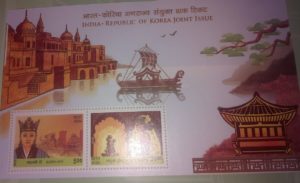Celebrating India-Republic of Korea bilateral relations
The rationale for a close relationship between India and RoK has been reinforced in modern times by political and econnomic imperatives.

The luminious and gastronomicaly enchanting Korean Evening recently hosted by the Embassy of the Republic of Korea and the Korean Cultural Centre in New Delhi together with the Foreign Correspondents’ Club of South Asia was a wonderful reminder of the many lures and seductive charms of this Asian country, otherwise usually a technological powerhouse in the popular imagination.
The celebrations were not just those saluting the delicious Korean cuisine and culture. It was also a celebration of bilateral ties between two Asian democracies – India and the Republic of Korea.
Bilateral consular relations between India and the Republic of Korea (RoK) were established in 1962. In 1973 relations were upgraded to Ambassador-level (also with Pyongyang). Consistent Indian support for a peaceful reunification of the tow Koreas has been well received in this country.
However, historical and cultural contacts between two peoples date back to ancitnt times. According to “Samguk Yusa” or “The Heritage History of the Three Kingdoms” written in the 13th century, a Princess from Ayodhya (Suriratna) came to Korea, married King Kim-Sum, and became Queen Hur Hwang-ok in the year 48AD. Queen Heo, then 16 years old, sailed across the ocean under the orders of the king of the “Ayuta” kingdom on a essel that carried the Pasa Stone Pagoda, which was said to have calmed the high seas. She thus became the first women toever immigrate to Korea. After the rowyal wedding , the queen bore her king 10 sons and two daughters. Of the 10 sons, two took their mother’s surname and became the progentiros of the Gimhae Heo clan. The Pasa Stone Pagoda that the queen brought to Kore was kept at Hogyesa Temple a=until the late Joseon Dynasty, at which time it was moved to the Tombn of Queen Heo. The pagoda currently sits inside a dedicated pavilion at the tomb and is preserved in excellent condition. Korean Buddhist monk Hyecho (704-787 CE) or Hong Jiao visited India from 723 to 729 AS. His travelogue “Pilgrimages to the fie kingdoms of India” gives a viid account of Inndian culture, politiccs & society, including food habits, languages and climate.
 The rationale for a close relationship between India and RoK has been reinforced in modern times by political and econnomic imperatives. The experience of colonial rule and the anti-colonial movements in ountries revived interest in each other. Nobel Laureate Rabindranath Tagore composed a short but evocative poem – ‘Lamp of the East’ – in 1929 abotu Korea’s glorious past and its promising bright future. He wrote: “In the golden age of Asia Korea was one of its lamp bearers, And that lamp is waiting to be lit one again. For the illuminatino of the East.”
The rationale for a close relationship between India and RoK has been reinforced in modern times by political and econnomic imperatives. The experience of colonial rule and the anti-colonial movements in ountries revived interest in each other. Nobel Laureate Rabindranath Tagore composed a short but evocative poem – ‘Lamp of the East’ – in 1929 abotu Korea’s glorious past and its promising bright future. He wrote: “In the golden age of Asia Korea was one of its lamp bearers, And that lamp is waiting to be lit one again. For the illuminatino of the East.”
Bilateral relationship is witnesseing new momentum folloing the inauguration of President Moon Jae-in’s administration in May 2017. In the last one year, both countries had three VVIP visits. President Moon Jae-in and First Lady Kim Jung-sook visited India in 2018. Prime Minister Narendra Modi visited RoK in February 2019. The two contries are eploring areas of further collaboratino under the synergistic frameworks of RoK’s ‘New Southern Policy’ and India’s Act East Policy.